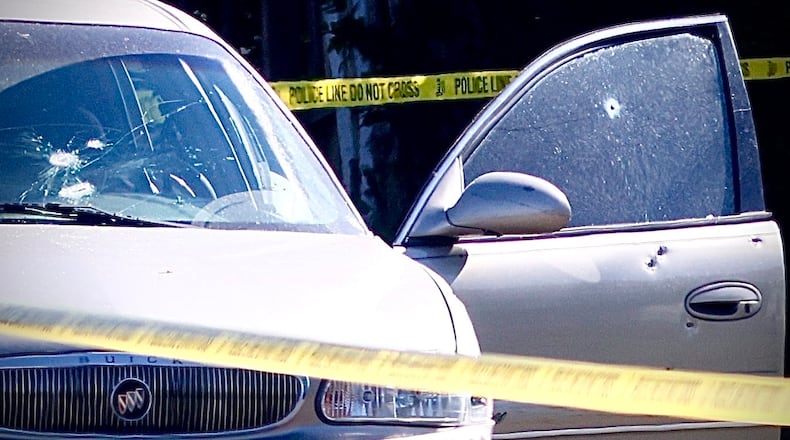On Oct. 19, Dayton police responded to a wellness check in the 1200 block of Rosedale Drive around 8:36 a.m. after a 911 caller reported a man, later identified as Taylor Cotton, threatened to kill her.
While officers were on scene, Cotton returned to the residence in a car.
Crews attempted to de-escalate the situation for about 25 minutes, but Cotton got out of the vehicle and pointed a shotgun at police, Dayton police Maj. Paul Saunders said.
Eight officers shot at Cotton, including six Dayton officers, a Montgomery County sheriff’s deputy and a Moraine officer. It’s not clear how man times Cotton was shot or how many total shots officers fired.
Crews began first aid, and medics transported Cotton to Miami Valley Hospital, where he died.
Saunders said the incident was less of a criminal issue and more of a mental health issue. He added it appeared Cotton had been experiencing a mental health crisis in the days leading up to the shooting.
The 911 caller who prompted the police response told Montgomery County Regional Dispatch that Cotton needed to go to the hospital. The caller claimed he set a neighboring house on fire the day before and was threatening her.
Depending on the circumstance, a person experiencing mental health issues may be more aggressive or have less self control than usual, Belshaw said. If a person is also on substances, that can create an even more volatile situation.
According to the Dayton Police Department’s Use of Force and Officer Firearm Discharge report for 2023, Dayton officers used force with 15 people who were determined to be mentally unstable out of a total 192 people.
Approximately a third of subjects — 107 people — involved in police use of force incidents either had an unknown condition or didn’t have any condition detected.
Forty-three people were under the influence of alcohol; 11 were under the influence of drugs; nine were on alcohol and unknown drugs; and seven were on unknown drugs, according to the report.
Dayton police have responded to the Rosedale Drive residence 42 times in the last five years, including the incident on Oct. 19.
Five of those calls were for mental health checks, and two were for wellness checks. Those seven calls took place in the past 17 months. It’s not clear if those calls were related to Cotton.
Belshaw said a weapon being involved elevates the police response due to the increased safety risk.
“Less lethal (force) is used in a lot of circumstances,” he said. “In a situation where there’s a deadly weapon being pointed at them, that’s a little different because that changes the circumstance to where now its either (the officer) or the other person.”
He added police can’t aim for an armed person’s arm or leg because it doesn’t always reduce the risk to the officer.
“They could still have the ability to discharge that weapon and shoot the officer,” he said. “So most police procedures are if someone is pointing a weapon at you and it’s a matter of you versus them, then deadly force is authorized.”
While Cotton pointed a shotgun at officers, Saunders said investigators learned later it was not loaded.
Belshaw said police generally can’t tell if a firearm is loaded or real.
“The person on the other side cannot tell the difference,” he said. “So they have to assume, and the police would in this circumstance, that it is a dangerous weapon that can hurt them.”
Other conditions, such as the time of day or weather, can also impact visibility.
“If the situation is at night or even where there’s diminished visibility it makes it difficult to make judgement calls. You’ve got to assume if a person is brandishing a gun and pointing a gun at you that they’re going to intend to do harm to you, because you don’t know if they’re not.”
About the Author
